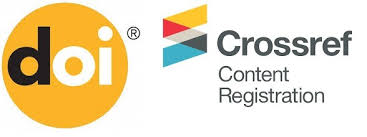Motivation and Risk Behind Financial Statement Fraudulence Using Fraud Theory
DOI:
https://doi.org/10.24912/ja.v29i2.2926Abstract
Financial information is a critical resource for users of financial statements in their decision-making processes. However, errors in decision-making can arise from management's fraudulent activities within these financial statements. Such actions primarily benefit management while adversely affecting other stakeholders. Consequently, this study explores the motivations behind management's engagement in fraudulent practices in financial reporting, utilising established fraud theories, including the triangle, diamond, pentagon, and hexagon models. The research focuses on cyclical and non-cyclical sector companies listed on the Indonesia Stock Exchange from 2020 to 2022, with a sample of 152 companies selected through purposive sampling. Logistic regression analysis is employed to test the hypotheses. The findings indicate that, according to each theoretical framework, the motivations for fraud stem from pressures to sustain the company's financial stability and the opportunities and collusion available to perpetrate such fraud.
References
ACFE 2022
Achmad, T., Ghozali, I., Helmina, M. R. A., Hapsari, D. I., & Pamungkas, I. D. (2023). Detecting Fraudulent Financial Reporting Using the Fraud Hexagon Model: Evidence from the Banking Sector in Indonesia. Economies, 11(1). https://doi.org/10.3390/economies11010005.
Achmad, T., Ghozali, I., & Pamungkas, I. D. (2024). Detecting Fraudulent Financial Statements with Analysis Fraud Hexagon: Evidence from State-Owned Enterprises Indonesia. WSEAS TRANSACTIONS ON BUSINESS AND ECONOMICS, 21, 2314–2323. https://doi.org/10.37394/23207.2024.21.190.
Adha, A., & Indrayani, E. (2024). Fraud Triangle Analysis Detects Fraudulent Financial Statements Using A Fraud Score Model from BUMN Bank 2012-2022. Ilomata International Journal of Management, 5(2), 375–388. https://doi.org/10.61194/ijjm.v5i2.1101.
Adhania, S., Holiawati, H., & Nofryanti, N. (2024). The Effect of Hexagon Fraud Theory in Detecting Financial Statement Fraud. International Journal of Digital Marketing Science, 1(1), 10–23. https://doi.org/10.54099/ijdms.v1i1.854.
Alfarago, D., Syukur, M., & Mabrur, A. (2023). The Likelihood of Fraud From the Fraud Hexagon Perspective: Evidence From Indonesia. ABAC Journal, 43(1), 34–51. https://doi.org/10.14456/abacj.2023.3.
Andrean, I., & Salim, S. (2022). Fraud Diamond Dalam Mendeteksi Financial Statement Fraud Pada Perusahaan Manufaktur. Jurnal Ekonomi, 26(11), 187–207. https://doi.org/10.24912/je.v26i11.773.
Andriani, K. F., Budiartha, K., Sari, M. M. R., & Widanaputra, A. A. G. P. (2022). Fraud pentagon elements in detecting fraudulent financial statements. Linguistics and Culture Review, 6, 686–710. https://doi.org/10.21744/lingcure.v6ns1.2145.
Bader, A. A., Abu Hajar, Y. A., Weshah, S. R. S., & Almasri, B. K. (2024). Predicting Risk of and Motives behind Fraud in Financial Statements of Jordanian Industrial Firms Using Hexagon Theory. Journal of Risk and Financial Management, 17(3). https://doi.org/10.3390/jrfm17030120.
Cressey, D. R. (1950). The Criminal Violation of Financial Trust. American Sociological Review, 15(6), 738–743. https://doi.org/https://doi.org/10.2307/2086606.
Devi, P. N. C., Widanaputra, A. A. G. P., Budiasih, I. G. A. N., & Rasmini, N. K. (2021). The Effect of Fraud Pentagon Theory on Financial Statements: Empirical Evidence from Indonesia. Journal of Asian Finance, Economics and Business, 8(3), 1163–1169. https://doi.org/10.13106/jafeb.2021.vol8.no3.1163.
Dwimawanti, I. H., & Ramadani, N. (2023). The Fraud Diamond of Public Service in Indonesia. KnE Social Sciences, 2023, 503–515. https://doi.org/10.18502/kss.v8i11.13569.
Fitrianingsih, T., & Bandi, B. (2024). Can The Diamond Fraud Model Influence the Occurrence of Fraudulent Financial Reporting? Journal of Asian Multicultural Research for Economy and Management Study, 5(2), 8–19. https://doi.org/10.47616/jamrems.v5i2.493.
Fitriyah, R., & Novita, S. (2021). Fraud Pentagon Theory For Detecting Financial Statement Fraudulent. JRAK, 13(1), 20–25. https://doi.org/10.23969/jrak.v13i1.3533
Flayyih, H. H., & Khiari, W. (2023). An Empirical Study To Detect Agency Problems in Listed Corporations: the Emerging Market Study. Journal of Governance and Regulation, 12(1 Special Issue), 208–217. https://doi.org/10.22495/jgrv12i1siart1.
Hakim, M. Z., Hamdani, Galang Reza Firdaus Budiutomo, Yola Dyfa Meisari, Helen Retno Wulandari, & Thorik Satria Ilmi. (2024). The Impact Of Financial Statement Fraud Through The Fraud Hexagon On Consumer Cyclicals Sector Companies On The Indonesia Stock Exchange In 2020-2022. International Journal of Accounting, Management, Economics and Social Sciences (IJAMESC), 2(2), 392–405. https://doi.org/10.61990/ijamesc.v2i2.201.
Handoko, B. L., & Salim, A. S. J. (2022). Fraud Detection Using Fraud Hexagon Model in Top Index Shares of KOMPAS 100. Proceedings of 2022 the 12th International Workshop on Computer Science and Engineering, Wcse, 112–116. https://doi.org/10.18178/wcse.2022.06.017.
Hascika, D. P., Sinurat, D. P., Dewi, A. V., Sunaryo, D., & Wulandari, S. S. (2024). Fraud Factor Analysis Hexagon in Detecting Financial Report Fraud In Listed Companies in Indonesia: A Systematic Literature Approach. Indo-Fintech Intellectuals: Journal of Economics and Business, 4(5), 2589–2605. https://doi.org/10.54373/ifijeb.v4i5.2147.
Inayah, J. Z., & Chariri, A. (2024). The Determinants of Financial Statement Fraud: Fraud Pentagon Perspective. Jurnal Akuntansi Aktual, 11(1), 19. https://doi.org/10.17977/um004v11i12024p019.
Jensen, M. C., & Meckling, W. H. (1976). Theory Of The Firm: Managerial Behavior, Agency Costs And Ownership Structure. Journal of Financial Economics, 3, 305–360. https://doi.org/https://doi.org/10.1016/0304-405X(76)90026-X.
Julianto, A., Sopian, R. M., & Vebrianti, S. N. (2022). Fraud Analysis of Financial Statements in the Perspective of Fraud Triangle. Proceedings of the International Conference on Economics, Management and Accounting (ICEMAC 2021), 207(Icemac 2021), 275–281. https://doi.org/10.2991/aebmr.k.220204.029.
Khamainy, A. H., Ali, M., & Setiawan, M. A. (2022). Detecting financial statement fraud through new fraud diamond model: the case of Indonesia. Journal of Financial Crime, 29(3), 925–941. https://doi.org/10.1108/JFC-06-2021-0118.
Khumairoh, S., Kuntadi, C., & Maidani, M. (2023). Pengaruh Fraud Diamond dalam Mendeteksi Terjadinya Kecurangan Laporan Keuangan Studi Empiris pada Perusahaan Bumn yang Terdaftar di Bursa Efek Indonesia. Journal of Comprehensive Science (JCS), 2(1), 129–140. https://doi.org/10.59188/jcs.v2i1.193.
Lister, L.M. (2007). A Practical Approach To Fraud Risk: Comprehensive Risk Assessments Can Enable Auditors To Focus Antifraud Efforts On Areas Where Their Organisation Is Most Vulnerable—The Internal Auditor.
Mashitoh, H., Daurrohmah, E. W., Inan, D. I., & Firman, A. (2023). The Analysis of Fraud in Perspective of Fraud Pentagon Theory: An Empirical Study in Indonesia. Jati: Jurnal Akuntansi Terapan Indonesia, 6(2), 107–120. https://doi.org/10.18196/jati.v6i2.18765.
Masitah, D. (2024). Analysis of the Effect of Fraud Pentagon on Financial Statement Fraud Using M-Score and F-Score. Indonesian Journal of Innovation Studies, 25(4), 1–19. https://doi.org/10.21070/ijins.v25i4.1142.
Movaffagh, S., & Amiri, G. (2024). An Analysis of Fraudulent Financial Reporting Based on Fraud Hexagon Theory in Companies Listed on the Tehran Stock Exchange. Journal of Finance, 8(3), 1–24. https://doi.org/10.61186/ijf.2024.426994.1443.
Narsa, N. P. D. R. H., Afifa, L. M. E., & Wardhaningrum, O. A. (2023). Fraud Triangle And Earnings Management Based On The Modified M-Score: A Study On Manufacturing Company In Indonesia. Heliyon, 9(2), e13649. https://doi.org/10.1016/j.heliyon.2023.e13649
Octaviana, N. (2022). Analysis Elemen-Elemen Fraud Hexagon Theory Sebagai Determinants Fraudulent Financial Reporting. Jurnal Akuntansi, 11(2), 106–121. https://doi.org/10.46806/ja.v11i2.895
Owusu, G. M. Y., Koomson, T. A. A., Alipoe, S. A., & Kani, Y. A. (2022). Examining the predictors of fraud in state-owned enterprises: applying the fraud triangle theory. Journal of Money Laundering Control, 25(2), 427–444. https://doi.org/10.1108/JMLC-05-2021-0053
Ozcelik, H. (2020). an Analysis of Fraudulent Financial Reporting Using the Fraud Diamond Theory Perspective: an Empirical Study on the Manufacturing Sector Companies Listed on the Borsa Istanbul. Contemporary Studies in Economic and Financial Analysis, 102, 131–153. https://doi.org/10.1108/S1569-375920200000102012
Rachman, M. N., Suhendro, S., & Azhar, R. (2023). Analysis of factors affecting fraudulent financial reporting from a fraud Pentagon perspective. Asian Journal of Economics and Business Management, 2(1), 342–352. https://doi.org/10.53402/ajebm.v2i1.262
Rahman, M. J., & Jie, X. (2024). Fraud detection using fraud triangle theory: evidence from China. Journal of Financial Crime, 31(1), 101–118. https://doi.org/10.1108/JFC-09-2022-0219
Shahzadi, K., Alim, W., & Khan, S. N. (2024). Do the fraud triangle components fuel complex financial fraud? A study of nonfinancial firms in Pakistan. Journal of Financial Crime, 32(1), 207–220. https://doi.org/10.1108/JFC-10-2023-0270
Sukaesi, P. E., Indupurnahayu, I., & Hurriyaturrohman, H. (2024). Pengaruh Fraud Triangle Pada Kecurangan melalui Analisis Beneish Ratio Index Sebagai Pendeteksi Kecurangan Laporan Keuangan. ECo-Fin, 6(2), 279–289. https://doi.org/10.32877/ef.v6i2.1009
Supriatiningsih, Safri, Suryaningsih, M., Husadha, C., & Kalbuana, N. (2023). A Moderation Variable’s Impact of the Triangle Theory of Fraudulent Financial Reporting with Managerial Ownership. Review of Economics and Finance, 21, 2375–2383. https://doi.org/10.55365/1923.x2023.21.252
Vousinas, G. L. (2019). Advancing theory of fraud: the S.C.O.R.E. model. Journal of Financial Crime, 26(1), 372–381. https://doi.org/10.1108/JFC-12-2017-0128
Wolfe, H. (2004). The Fraud Diamond: Considering the Four Elements of Fraud. Computer Fraud & Security, 2004(5), 11. https://doi.org/10.1016/S1361-3723(04)00065-X
Yuniarti, D. R., & Linuhung, T. S. (2023). Analysis of Factors That Influence the Occurrence Of Corruption in the Perspective of Fraud Hexagon. Britain International of Humanities and Social Sciences (BIoHS) Journal, 5(2), 152–163. https://doi.org/10.33258/biohs.v5i2.988
Downloads
Published
How to Cite
Issue
Section
License
Copyright (c) 2025 Jurnal Akuntansi

This work is licensed under a Creative Commons Attribution-NonCommercial-ShareAlike 4.0 International License.
This journal provides immediate open access to its content on the principle that making research freely available to the public supports a greater global exchange of knowledge.

This work is licensed under a Creative Commons Attribution-NonCommercial-ShareAlike 4.0 International License



















